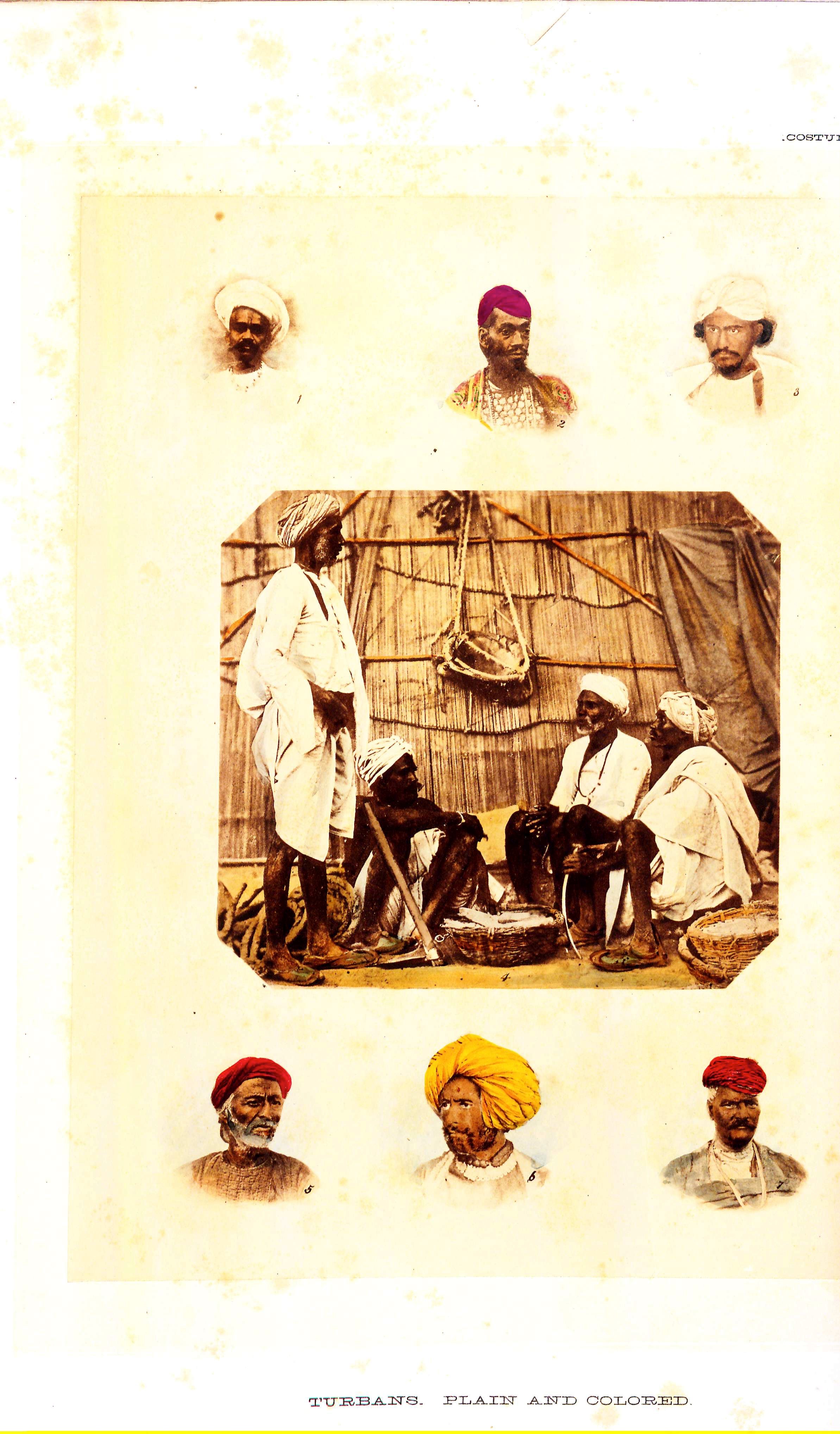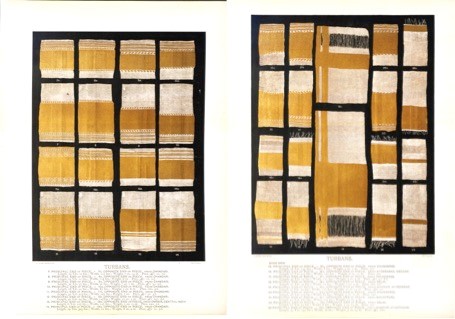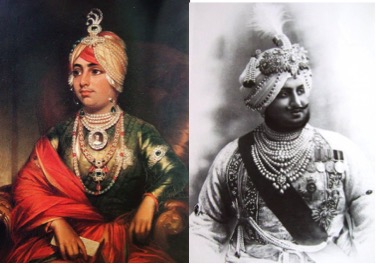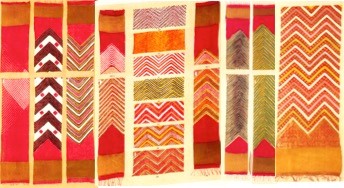Written by Jessica Masinter. She is an intern in the Cooper Hewitt Library and a literary studies major at Middlebury College.

This follow up blog to “The Textile Thief and the Great British Manufacturers,” focuses on Watson’s samples of turban pieces and their significance in India in the mid-1800s. When J. Forbes Watson was collecting samples for his collection Textile Manufactures of India, turbans were worn almost universally throughout India. In Watson’s companion book to his sample collection, entitled Textile Manufactures and the Costumes of the People of India, he recorded his observations on the uses and styles of turbans, paying particular attention to the way beauty and utility combined in the designs. Primarily, turbans were meant to be functional—they protected the wearer’s head from the sun, and optimally had a light, bulky and porous texture. Cotton fit the bill: it was cheap, abundant, and a good non-conductor that did not trap perspiration, so it was the chief material used for turbans. White was the most prominent color of turban; it was functional due to its heat reflecting properties and more practical for performing labor.

Of course, wearing a white t-shirt and jeans every day is functional, but you’d only wear it to a fancy occasion if you were trying to pull off the greaser look like Danny from Grease. In a less contemporary way, turbans were an opportunity to show style and taste. Turbans came in a wide variety of colors, and could have vibrant and tasteful patterns printed on the cotton or feature some kind of ornamentation. Specific turban prints often were meant for specific occasions. For example, gold printed turbans were used for marriage or family festivals, not ordinary wear.
Turbans could also be an opportunity to display wealth. Much like the difference between a $20 jacket (functional, dirt smudges are no big deal) and a $2,000 jacket (stylishly makes a statement, but whatever you do don’t spill wine on it), higher castes or royalty could afford for expensive ornamentation on turbans and use silk fabric instead of cotton.

But whether ornamented with emeralds or featuring a colorful pattern, the Indian textile artisans were deliberate with their designs. They avoided ornamenting places on the turban that would not be visible to the public eye when worn, because the excess was unnecessary and would interfere with the purpose of the turban. In Watson’s words, “the native artisan…continually displays an admirable skill in the arrangement of form and colour—producing those beautiful and harmonious combinations which are to the eye what chords in music are to the ear. The subdued elegance which characterizes Indian decoration never fails to please. It marks a pure and refined taste, and whether it be the result of cultivation or of instinct it certainly exhibits a charming obedience to the great principles of art.”
One of Watson’s interesting observations was that specific regions had specialties; for example, Madras was celebrated for its excellent dyes. In the Cooper Hewitt Library’s collection, the most striking example I found of repeating designs coming from a specific region was the zig-zag pattern in samples from Jeypore. Noting the variety and vibrancy of the colors, I remain unsurprised that Indian designs were so sought after by the British.


Be First to Comment